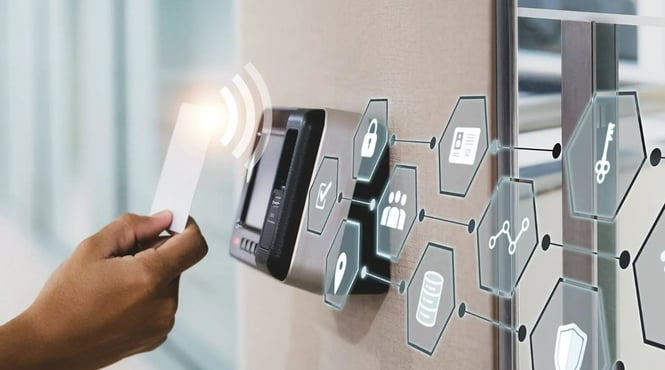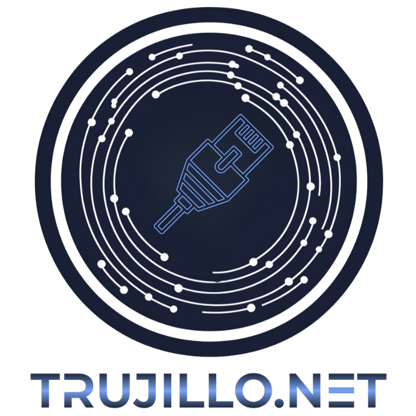Boosting Business Security with Smart Access Control
Control who comes in and out. Upgrade your security with smart access. Alarms, locks, and peace of mind.
4/27/20255 min read


Understanding Access Control Systems
Access control systems are essential security measures that regulate who can enter specific areas within a business effectively. These systems help organizations manage access to sensitive locations, thereby safeguarding valuable assets, data, and personnel. By employing a range of devices, businesses can ensure that access is granted only to authorized individuals, thereby preventing unauthorized entry.
At the core of most access control systems are various types of devices designed to restrict access based on predefined parameters. Among the most common devices are keypads, which require users to enter a security code before gaining entry. This method provides a straightforward solution for managing access, although it is imperative to regularly update codes to maintain security integrity.
Card readers are another prevalent type of access control device. Typically utilizing RFID technology, these systems allow users to gain access by presenting a secure identification card to the reader. The card is encoded with vital information, which the reader verifies against a database. Card readers are beneficial for their ease of use and the ability to revoke access remotely, ensuring that only current employees are granted entry.
In addition to keypads and card readers, smart locks have gained popularity, integrating advanced technology with traditional locking mechanisms. These locks can often be controlled remotely via smartphones, enabling businesses to monitor access in real time. Smart locks provide enhanced flexibility, as they can be programmed to grant access during specific hours or to certain individuals based on changing needs.
The importance of having a robust access control system cannot be overstated. By implementing effective access control measures, businesses can significantly reduce the risk of unauthorized access and potential security breaches. This strategic approach not only contributes to a safer working environment but also enhances overall operational efficiency. A well-designed access control system is a crucial component of a comprehensive security strategy for any organization.
Key Components of Smart Access Control
Smart access control systems are designed to enhance the security of businesses by utilizing advanced technology. By integrating various key components, these systems offer improved levels of security, convenience, and flexibility. The primary components of smart access control include keypads, card readers, smart locks, and security alarms, each serving a unique role in safeguarding business premises.
Keypads are a fundamental part of many access control systems. They allow authorized personnel to enter codes or passwords to gain entry. This method provides an effective barrier against unauthorized access, as each user can be assigned a unique code, enabling easy tracking of entries. Moreover, keypads can be programmed to restrict access to specific times, enhancing security for sensitive areas within a business.
Card readers are another essential component, often used in conjunction with ID cards or key fobs. These devices utilize magnetic stripes, proximity technology, or smart card solutions for authentication. Employing card readers provides a streamlined access method while maintaining high security standards. The ability to quickly revoke access to lost or stolen cards further enhances overall business security.
Smart locks represent a significant advancement in access control technology. Unlike traditional locks, these systems can be controlled remotely through smartphones or computers, allowing business owners to manage access from anywhere. Additionally, smart locks can integrate with existing security systems, creating a cohesive environment that furthers protection against unauthorized entry.
Finally, security alarms serve as a crucial deterrent against breaches. They can be triggered by unauthorized access attempts, alerting security personnel or business owners promptly. Modern security alarms can be integrated with other smart components to provide real-time notifications, ensuring immediate response capabilities.
Incorporating these key components of smart access control not only enhances overall security but also provides businesses with greater control over their premises, allowing for a more secure working environment.
Benefits of Professional Installation
The installation of access control systems is a critical component of any robust security strategy. When these systems are professionally installed, several benefits emerge that contribute to enhanced security and system efficiency. Firstly, professional installers possess the technical expertise required to set up various types of systems accurately. Access control systems are complex and require knowledge of wiring, software configuration, and compatibility with existing security infrastructure. Professionals are adept at identifying and mitigating potential issues that could arise during the installation process, ensuring a smooth implementation.
The risk associated with DIY installations can lead to significant vulnerabilities. Without a deep understanding of security systems, individuals may inadvertently create gaps in coverage or misconfigure components, which can compromise the effectiveness of the entire access control system. Additionally, incorrect installation might lead to frequent malfunctions, resulting in operational downtime and potential security breaches. Professional installers are trained to recognize these risks and implement systems in a manner that maximizes performance and reliability.
Moreover, the benefits of professional installation extend beyond the initial setup. Experienced professionals provide ongoing maintenance and troubleshooting services, ensuring that the system remains functional and up-to-date. They can promptly address any technical difficulties that may arise, reducing the strain on in-house resources and enhancing the overall security posture of the organization. Furthermore, compliance with local security regulations is an essential aspect of any access control system. Professional installers are well-versed in these regulations and can ensure that the installation meets all statutory requirements, thereby mitigating legal risks.
In summary, choosing professional installation for access control systems is integral to maximizing security effectiveness and maintaining operational integrity. The expertise offered by professionals not only optimizes system performance but also protects businesses from common pitfalls associated with inadequate setup.
Conclusion: Strategies for Enhancing Security with Smart Access Control
In today's rapidly evolving business landscape, the importance of robust security measures cannot be overstated. Smart access control systems play a pivotal role in enhancing overall security for businesses by regulating who can access specific areas and monitoring foot traffic in real-time. By utilizing modern technologies, such as biometric authentication and mobile access solutions, organizations can create a secure environment tailored to their unique needs.
As we have discussed, implementing a smart access control system involves several key considerations. First and foremost, businesses should conduct a comprehensive security assessment to identify vulnerabilities and determine the best access control solution. This assessment may include analyzing current security protocols, employee access levels, and the overall layout of the premises. Once potential risks are identified, it is crucial to choose a system that integrates seamlessly with existing security infrastructure while offering scalability for future growth.
Moreover, training employees on the correct use of access control systems is essential. Staff should be informed about the new technologies and the importance of compliance with security policies. Regular updates and drills can foster a culture of security awareness and ensure that the system operates effectively. Additionally, businesses must stay informed about the latest trends in access control technology, such as cloud-based solutions and smart locks, which offer greater flexibility and integration capabilities.
In summary, improving business security with smart access control systems is a proactive strategy that not only protects assets but also promotes a safer working environment. By adopting these strategies and remaining vigilant to emerging technologies, organizations can safeguard against potential security threats and enhance their overall operational integrity.
Subscribe To Newsletter Form
COPYRIGHT © 2025 Trujillonet LLC.
Phone number
Mon - Sat 7:00 AM - 6:00 PM
Hours
Follow Us On Social Media
Contact Us
